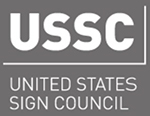You have your sign design, you are happy with the copy, the colors, and envision the location for your sign in front of your building. Your sign company has applied for the sign permit, but then advises you that your sign will need a variance. What does this mean?
A variance is a method of permit approval when the proposed sign is not within code standards, otherwise known as a variation from the code. The sign might be larger than allowed, or the sign may include an electronic message center (EMC) which may not be allowed. Or there may already be too many signs on the property. Each municipality has its own sign code requirements, and, not surprisingly, their own variance procedures.
A variance usually requires a separate application, including a written explanation why having a sign comply with the code requirements would create a hardship for the business. Along with notarized proof of ownership documents, numerous copies are collated and submitted to the municipality, along with a variance fee. Often a letter is mailed to all tax payers within 250 feet of the property explaining the sign request and notice of variance meeting, should a neighbor want to attend to find out more information.
When the variance meeting is held, the sign project is presented before a municipality plan commission board, the hardship is explained and a discussion is held. More often than not the variance is approved, and then the sign permit is approved.
It helps to have an experienced sign sales manager when a sign is going through a variance. The sales manager can answer the detailed questions about sign size, visibility, code allowances, and the sign needs for the individual business.
Tags
Subscribe to Parvin-Clauss's Blog







Comments